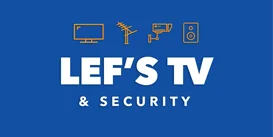Many homes have security cameras, and they can be a great way to keep an eye on kids or pets. However, these devices can also be used by cyber criminals to invade your privacy.
Whether they are wired or wireless, all cameras can be hacked, so it is important to take precautions. This includes using strong passwords and two-factor authentication.
Why is it important to secure your CCTV system?
CCTV can prevent crime before it occurs by capturing suspects on camera, which can help police investigate and prosecute the offenders. The footage can also aid business owners in identifying suspicious activities and re-training employees to identify potential dangers.
Keeping the system updated with software patches and vulnerability patching helps to improve security. Strong passwords can also reduce hacking attempts. Using multi-factor authentication, like MFA prompts for text messages or biometric fingerprints and facial recognition, can further protect your business systems.
Many hackers who target CCTV systems do so in order to access the data that is stored within them. This can include sensitive data such as trade secrets, employee information and other confidential documents.
If a CCTV system is not properly protected, it may open up the whole network to hackers who could potentially hack into routers and other Internet-accessible devices like Smart systems. Having a VPN (Virtual Private Network) to access the camera system and the data it stores is another way of providing extreme security.
For a local hacker to access the camera, they need to be physically in range and be able to find or guess your passwords. However, if a password is leaked in a data breach, this can make it easier for a criminal to hack your camera system and then work their way into your wireless network.
The Vulnerability of CCTV Networks: A Gateway to Data Breaches
In today’s interconnected world, security breaches pose a ubiquitous threat as hackers continuously refine their skills and seek unauthorized access to sensitive data. Astonishingly, one commonly overlooked vulnerability resides within the very surveillance systems designed to bolster security: CCTV networks.
CCTV networks, often inadequately secured, present enticing targets for hackers. Weak passwords, outdated firmware, and misconfigured settings stand as common vulnerabilities. Once infiltrated, hackers can pilfer sensitive data, disrupt operations, or even orchestrate attacks on other systems.
To mitigate the risk of CCTV security breaches, organizations must enforce robust security measures. These include employing strong passwords, maintaining up-to-date firmware, and configuring settings appropriately. Additionally, vigilant monitoring of CCTV networks for signs of unauthorized activity is imperative.
The Dangers of Network Integration: Lessons from Past Incidents
History is riddled with incidents that serve as cautionary tales about the perils of integrating CCTV networks with broader data networks. Hackers, once granted access to the CCTV infrastructure, have found themselves unintentionally granted free rein within the entire data network, including sensitive areas where critical business information resides.
These incidents serve as glaring reminders of the need for vigilance when it comes to network security. While convenience and efficiency might tempt businesses to merge their CCTV and data connections, the risks far outweigh the benefits. It is imperative to understand that compromising the security of one system can have far-reaching consequences for the entire network infrastructure.
How do hackers attack CCTV systems?
One of the most common ways to attack CCTV systems is by using default passwords, which many owners fail to change. This allows hackers to gain access to the camera and exploit the system. Additionally, some CCTV systems have DMZ configurations that allow anyone to connect to them from the internet without any authentication. It is important to avoid DMZ configurations and hire a professional installer for your CCTV system.
Hackers also exploit CCTV systems by finding vulnerabilities in their firmware. This is particularly true of unbranded CCTV devices, which often lack the latest firmware updates. Buying branded CCTV systems with brand warranties can help prevent this from occurring.
Safeguarding Business Networks: Separating CCTV and Data Connections
To fortify the integrity of a business network, it is essential for owners and IT administrators to establish a clear demarcation between the CCTV network and the data network that stores sensitive information. The first step in this endeavor is to create a separate internet connection dedicated solely to the CCTV network.
By segregating the CCTV network from the rest of the data infrastructure, business owners can mitigate the potential fallout from a security breach. This isolation ensures that even if unauthorized access is gained through the CCTV system, hackers will be unable to traverse into areas where vital employee data, such as payroll and accounting information, is stored.
Safeguarding Business Networks: firewalls, encryption, and regular system audits
Furthermore, implementing robust security measures, including firewalls, encryption, and regular system audits, will provide an additional layer of protection. Maintaining constant vigilance and staying up to date with emerging security threats is paramount to safeguarding a business’s assets and preserving customer trust.
In conclusion, recognizing the vulnerability of CCTV networks and taking proactive steps to separate them from the broader data network is crucial for maintaining the security and privacy of sensitive business information. By prioritizing network segregation and adopting stringent security protocols, business owners can minimize the risk of cyberattacks and protect their data from falling into the wrong hands.
Additional Security Steps
Security camera systems can often be hacked by hackers who are looking to steal private footage or access protected data. Fortunately, it is also possible to decrease the chance of these attacks happening by taking precautionary steps.
Changing passwords and usernames regularly is a simple yet effective way to reduce the chances of your camera system being accessed by hackers. It is also important to use strong passwords that are different from your other accounts to make it more difficult for hacker to guess or crack them. Using two-factor authentication is another security measure that requires you to enter a code sent to you by your smartphone, as well as your username and password, when logging in to your account. This is an additional layer of protection and can prevent hackers from getting access even if they manage to get your username and password.
It is also a good idea to update your security cameras firmware regularly. This helps to patch up any vulnerabilities and weaknesses that have been discovered by white hat hackers and security researchers to protect you from hacker attacks. Moreover, keeping your camera’s firmware updated is especially vital for cameras that are part of a home or business security system.

